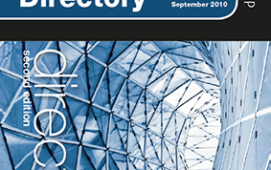An Asset Control-sponsored white paper written by TowerGroup highlights the challenges money managers, broker-dealers and asset servicers face in managing their securities technology and operations infrastructures to facilitate faster response to a variety of market conditions, more flexible process, IT and data structures, and an enhanced client experience.
The paper, entitled “Enterprise Data Management Equilibrium: Balancing Centralization vs. Federation in the Securities Firm,” explains how flexibility in configuring processes and IT and data infrastructure is critical in helping firms to reconcile data autonomy with centralization, data sharing with control, and data performance with usability. As firms seek to improve cost positions, risk management and transparency, they continue to struggle with islands of automation, fragmented data sources, and disparate processes. The paper examines centralized and “federated” or distributed approaches to managing data, and offers progressive practices and recommendations for improving processes and data architectures.
“The intelligent application of correct data management is as critical to ensuring the capital markets organization’s success as the core business itself,” Dayle Scher, research director at TowerGroup and author of the paper. “The top challenges of securities firms revolve around data and systems integration, data quality, and process or technology complexity. In fact, firms readily admit that the integration of data remains one of their biggest pain points. Two data models, centralized and federated, are emerging as firms pursue the contradictory goals of autonomy and central control, value-added impact and efficiency. Firms that succeed in choosing the right model for the right function will be rewarded with a cost-efficient, highly flexible infrastructure that is capable of dealing with the tumultuous environment the securities industry now faces.”
Although the traditional, centralized data model provides a single source of data offering a high degree of control and efficiency once it is built, the model breaks down most often when complex business requirements make for challenging data model definitions, database designs, and updating and cleansing processes. This can result in long development cycles and slower time to market. The federated model applies certain elements of centralization while also allowing local sources to retain control of the production, enhancement and dissemination of shared information. The result is faster implementation, information updates and time to market.
Asset Control provides solutions that offer flexible options for centralized and federated data management: the AC Plus platform for data acquisition, centralized exception-based processing and downstream distribution, and AC Invest for on-demand business and departmental data consumption. AC Plus and AC Invest can be used together in a federated model to bring together key enterprise data into actionable form using a hub-and-spoke framework. The solution allows for data to be managed at the corporate level with local enrichment, providing one integrated solution that suits individual business needs within a single organization and creates economies of scale with audited local flexibility. The federated solution can also provide asset servicers with a scalable, flexible infrastructure designed to service third parties and expand income streams.
Phil Lynch, president and chief executive officer at Asset Control, said, “Many securities firms are working on improving their ability to integrate data across geographies, asset classes and functions. We understand that one size definitely does not fit all, and our approach addresses that by providing business-oriented, configurable and flexible solutions to meet a wide range of requirements. Asset Control’s federated model, which incorporates elements of both central and distributed architectures, can help improve data management, valuations and back-office operational integrity, while quickly meeting high-volume and rapid response needs, as well as specific language, exchange or asset class requirements.”
Subscribe to our newsletter



